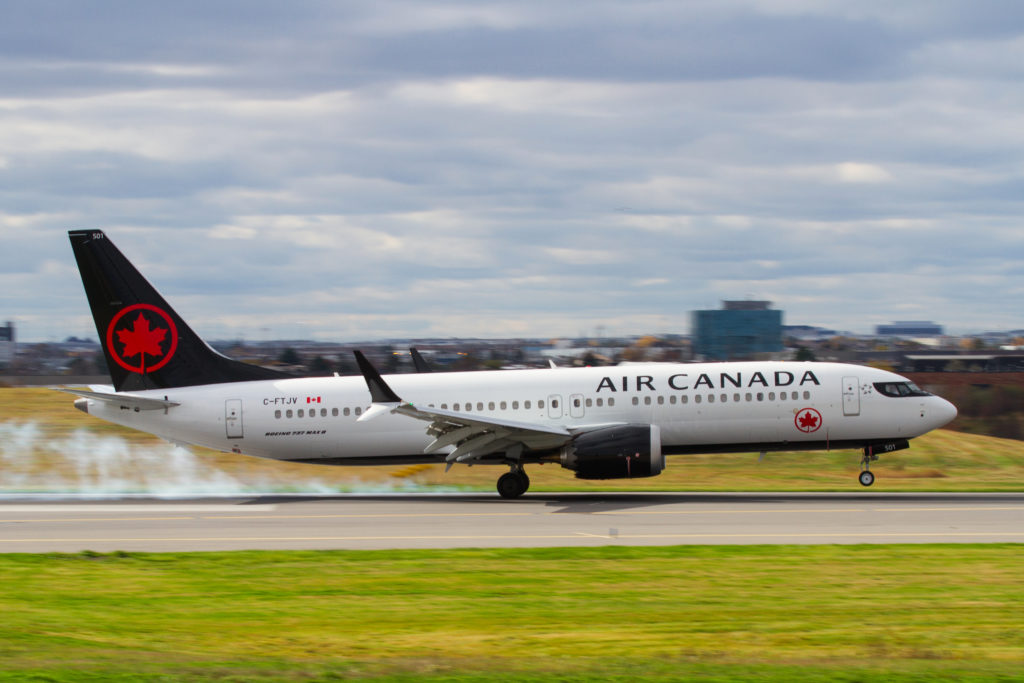Estimated reading time 5 minutes, 32 seconds.
Following multiple groundings of the Boeing 737 MAX family for the foreseeable future, questions remain about when the jets will get back in the air and whether the manufacturer will be liable for compensating operators for lost productivity.

On the prospect of resumed flights, Boeing has been working on a software patch–scheduled for roll-out to the global fleet in April–to address an apparent conflict between the autopilot attitude and airspeed indicators, which was thought to be a contributing factor in the Oct. 29, 2018, crash of a Lion Air MAX 8 just minutes after takeoff from Jakarta, Indonesia.
Pressure for a fix heightened in the aftermath of the March 10 crash of an Ethiopian Airlines MAX 8 almost immediately after taking off from Addis Ababa.
Canada and the United States were among the last few nations to keep the planes in service, with both countries defending the “next generation” of Boeing’s most successful product as fundamentally safe. However, a review by an independent panel of Canadian experts prompted Transport Minister Marc Garneau to announce March 13 that all MAX 8 aircraft certified in Canada were grounded immediately and indefinitely as “a precautionary measure.”
Transport Canada’s notice also applies to all foreign operators of the MAX 8 and Boeing’s larger MAX 9 sibling (a significant element of the United Airlines fleet), which were prevented from entering Canadian airspace. Those that were inbound at the time of Garneau’s news conference were advised to complete their schedule.
Canada had already mandated additional pilot training to deal with the perceived problem after the Lion Air crash. But then the expert panel reviewed satellite data available to Nav Canada and other air traffic control (ATC) authorities in the aftermath of the Ethiopian accident. Real-time aircraft data–including altitude, speed, direction and other factors–are constantly updated to satellites for transmission to ATC.
New data received on the morning of March 13 suggested “a possible although unproven similarity in the flight profile” of the Ethiopian and Lion Air flights. Although non-conclusive, the analysis indicated “similarities that sort of exceed a certain threshold in our minds with respect to the possible cause of what happened in Ethiopia. . . . it is something that points possibly in that direction and at this point we feel that threshold has been crossed.
“I can assure you it’s been occupying our time 100 per cent for the past few days,” Garneau said.
When Skies asked how soon the 737 MAX variants might be flying once the Boeing software patch is installed and validated, the minister deferred to Aaron McCrorie, his acting assistant deputy minister for Safety and Security, who echoed the minister’s assertion that Transport would take “an evidence-based approach” to that decision.
“Part of trying to understand what happened in Ethiopia is to understand to what extent the software patch would help address that,” explained McCrorie. “They’d have to go through a normal certification process. . . . We’re waiting for the software patch, so we’re dependent on the manufacturer to bring that information to us, but our flight test engineers will be engaged on that.”
Meanwhile, at least one operator has asked Boeing to compensate them for removing their aircraft from service indefinitely.
Earlier on March 13, discount carrier Norwegian Air Shuttle (NAS) announced it would “send the full bill” to Boeing for having to ground its fleet of 18 737 MAX 8s.
NAS spokesperson Lasse Sandaker-Nielsen said the European launch customer for the MAX 8, with 108 on order and an option for 92 more, “should not be penalized economically because a totally new plane cannot fly.”
While it had to cancel 19 flights on March 13 on orders from the European Aviation Safety Agency (EASA), it did find alternate departures for most of “several thousand” passengers.
Air Canada, WestJet and Sunwing have been asked by Skies whether they plan to seek similar compensation.
There also is the question of possible compensation for the many Canadians currently away for a March Break holiday, but Garneau said that’s an issue for travellers and the airlines to sort out.
“When a decision is made such as this one which is a major decision affecting one class of aircraft, obviously there were flights planned for today and in subsequent days,” he said. “There is some disruption and yes, it’s unfortunate, but we must put safety at the top in our considerations. . . .
“Canadians who have flights booked on the MAX 8 will have the opportunity in speaking with the airlines. The airlines have been very understanding up to this point in dealing with this situation. . . . Hopefully we’ll be able to resolve this issue in the coming weeks and get the MAX 8 back up and flying; but for the moment, caution has to dominate.”








